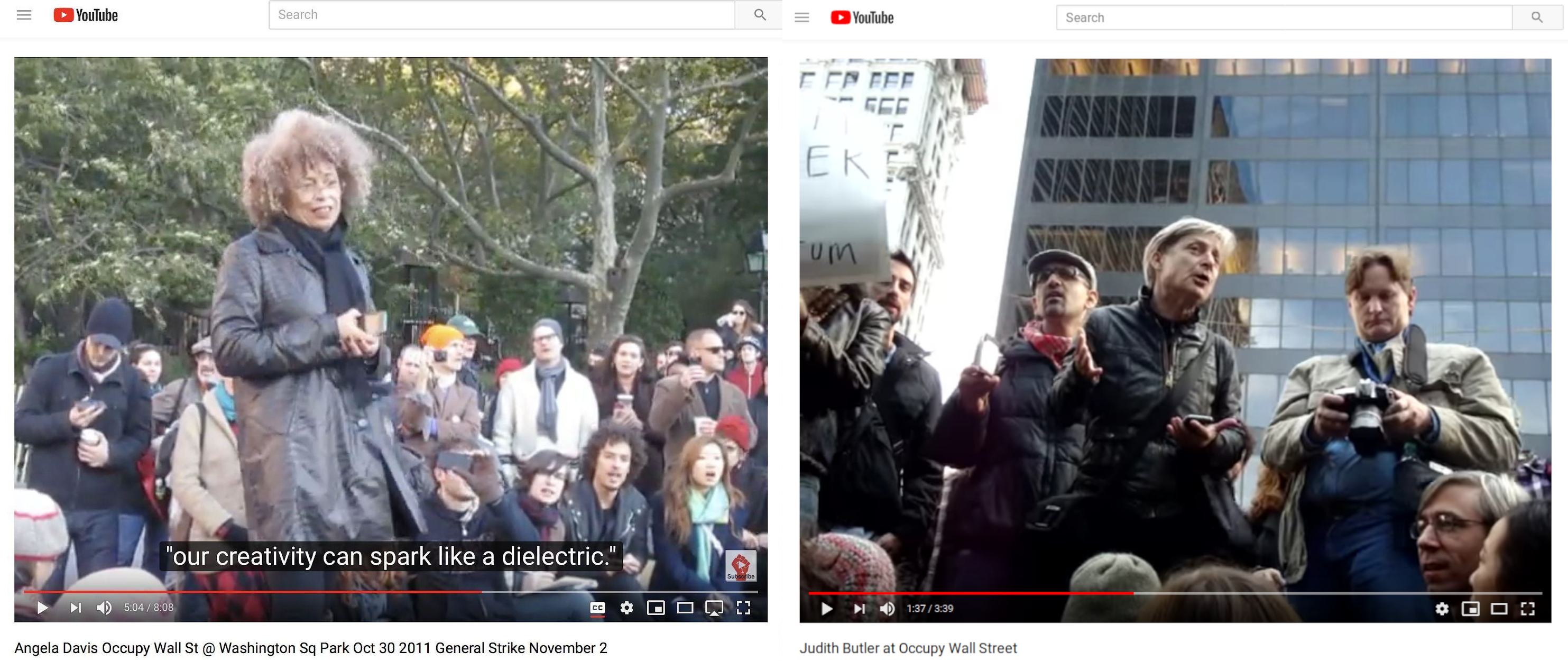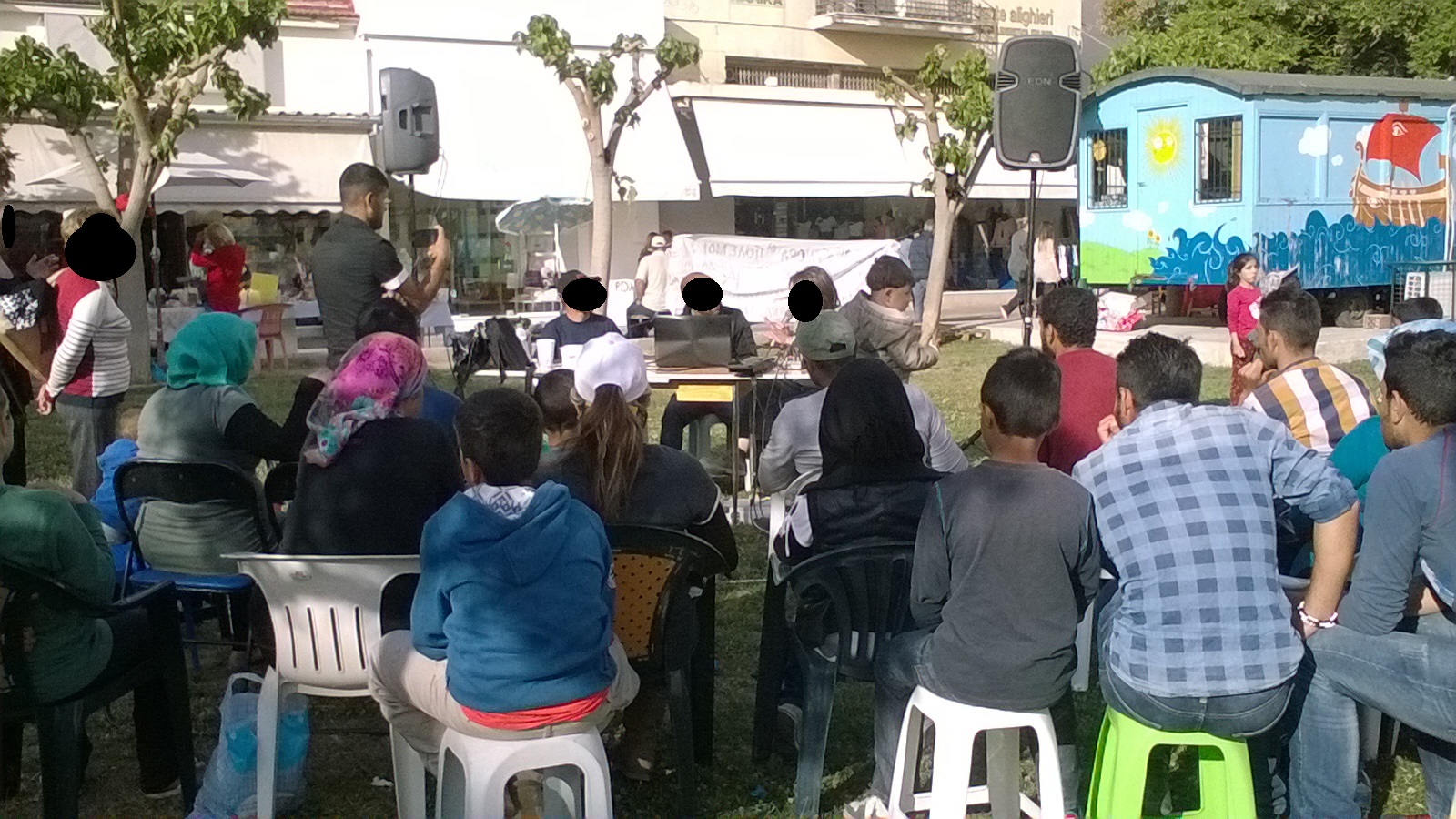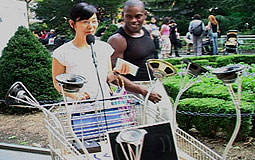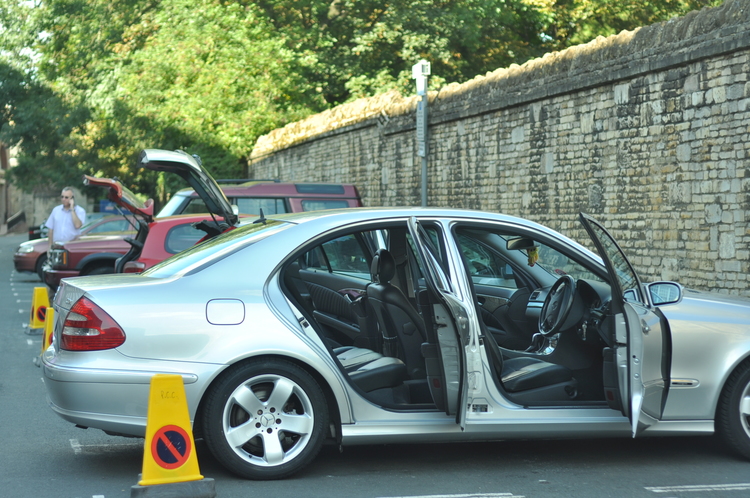16 KiB
Multiplication Vis a Vis Amplification
The mediation of voice through multiplication
History of public speech[public sphere, public forums]
The urban space hosts several political activities like squatting, demonstrations, politics of culture and identity that are visible on the street and non dependent on massive media technologies. Such an example is the Speaker's Corner, "the home of free speech, where anyone can get on their soapbox and make their voice heard" (Coomes, 2015). Anyone becomes a speaker in a public street or square and can be heard by passengers by. This was a very crucial element in the Occupy Movement 1; part of the occupy events would be public speeches often by philosophers, writers, academics, resistant figures(?) on the spot of the occupied space. The audience would may be very big and thus an amplifier was needed for the voice of the speaker to be heard to everyone. However, in the case of the Occupy Wall Street, amplified sound devices, like microphone and megaphone, were only allowed outside in the public spaces when a special permission from the municipality was given 1. But "when the technologies above them are removed somehow, the foundational elements remain embedded and embodied in our cyborg bodies and brains" (Pages, 2011). The participants of #occupy became the 'human microphone', as they call it. This means that all together would repeat the words of the speaker for the benefit of those located in the rear. "Even given that many of the participants of #occupy are in full possession of smartphones, verbal address to the crowd from a singular source is still important" (Pages, 2011). This is an interesting fact of the public outside physical space of today. Even though many new technologies of networking, amplification and communication emerge, the public space seems to exist in a more 'primitive' and embodied expression for the ones that lack platforms of representation. Saskia Sassen (2012, p.) observes that in the cities today a big mix of people coexist. The ones who lack power can make themselves present through face to face communication. According to her this condition reveals another type of politics and political actors, based on hybrid contexts of acting and outside of the formal system. Kanaveli (2012) says that something that is visible and can be heard is reality and can create and give power. Site specificity is also very characteristic here.
From my point of view, the Occupy Movement revealed a lot about the relation of the media technology with the presence and resistance, emerged as an amplified process, in public. What I find interesting is that those people because of their multilayered relation to technology, like social media, are able to spread the words and make them viral in Internet. As it can be seen from the Youtube videos of the #occupy the crowd is using a lot of different media technologies, like their smartphones, to record or stream the words of the public speakers in Livestream platforms. This process was also a way to archive and make public bottom-up initiatives in public spaces in diverse networks. At the same time there is a temporariness in this action as platforms in internet are constantly changing or disappearing. So, the events and speeches are appearing in fragments of videos, transcriptions, conversations in forums. It is more like the users, protesters are leaving as many traces online as possible, as fragments of resistance. The multilayered communication of the events is like an urgent and fast multiplication of them in different forms and spaces [more]. The use of all these media doesn't require any special skill and the presence of an expert is not required. So mainstream media journalists are not needed for the news to spread to a wider public. This also means that the message is not edited or altered by a big company. "With cellphones, iPads and video cameras affixed to laptops, Occupy participants showed that almost anyone could broadcast live news online. In addition, they could help build an audience for their video by inviting people to talk about what they were seeing" (Preston, 2011)
 Multiplication could be seen as a way of parallel and multiple presences in diverse private and public places. Internet, Skype, Youtube, voice messages “[r]adio and television have brought major political figures as public speakers to a larger public than was ever possible before modern electronic developments” (Ong, pg. 135). There are two ways of multiplication in the above examples. The one is through a unified collective voice and the other one through spreading the words as a spider net. The 'human microphone' resembles the first examples of collective voices in public, which is the 'ololyga', the female collective utterance (see 'Monstrosity'). Even though may not be a direct expression of resistance, it was an alternative temporary and informal [not specialized] mode of address that was suppressed and used only for specific occasions that were acceptable by the society at that time (see 'Monstrosity'). The second case reminds me of the very ancient practice of gossiping [example of gossip-based algorithms/ Gossip protocol/ peer-to-peer communication]. It has a negative connotation especially when connected with women [text of Federici]. However sometimes this is more an attempt to claim and exchange knowledge when there is no platform for them that practice it. The Internet and social media have the same baton effect and even though this is misused by mainstream political voices, it also serves the voiceless [examples and images].
Multiplication could be seen as a way of parallel and multiple presences in diverse private and public places. Internet, Skype, Youtube, voice messages “[r]adio and television have brought major political figures as public speakers to a larger public than was ever possible before modern electronic developments” (Ong, pg. 135). There are two ways of multiplication in the above examples. The one is through a unified collective voice and the other one through spreading the words as a spider net. The 'human microphone' resembles the first examples of collective voices in public, which is the 'ololyga', the female collective utterance (see 'Monstrosity'). Even though may not be a direct expression of resistance, it was an alternative temporary and informal [not specialized] mode of address that was suppressed and used only for specific occasions that were acceptable by the society at that time (see 'Monstrosity'). The second case reminds me of the very ancient practice of gossiping [example of gossip-based algorithms/ Gossip protocol/ peer-to-peer communication]. It has a negative connotation especially when connected with women [text of Federici]. However sometimes this is more an attempt to claim and exchange knowledge when there is no platform for them that practice it. The Internet and social media have the same baton effect and even though this is misused by mainstream political voices, it also serves the voiceless [examples and images].
The mediation of voice through amplification
In some occasions the amplification of the voice, as a mode of prohibition and presence, becomes possible both literally and metaphorically [definition of amplification]. This means that somebody can amplify their voice with the use of microphone so to strengthen the signal on the spot, and at the same time to make themselves loud and present so to be heard over the dominant ones. Microphonic demonstrations in Greece, antifascism and presence, occupying for a couple of hours using speakers, microphone or megaphone broadcasting music and speech...Relatively nazi soundscapes with the megaphone and the van/the history back ...


Suffragettes' speech-making workshops was a way to provide women with tools “with which to take their concerns out into the public domain” (Rose Gibbs, 2016) or in other words to amplify their voices in public. Speech was a civilized way to respond to violence happening inside homes. Feminists focused on the voice because there is a uniqueness in it, that embodies the speaker when entering a dialogue. It is an approach that rejects the abstract and bodiless universal identity of one's person, that has been developed by the western thought. By such identity I mean that one person is represented as a universal entity that shares the same characteristics and problems with all the people. So this person can be represented by somebody else, like a politician or another member of the family (see Transmitting...through men's speech), in a conversation concerning her/his body. But according to the feminist perspective, each one is unique and carries personal and situated problems and principles, so they are the only one that can represent themselves. Arendt () observes that the speech becomes possible with the existence of a group of people. Even more, the voice through speech- that can take the form of songs passing from one to the other or the collective voice of protesting- links one another and at the same time keeps the individuality of the speaker. In contrast to mainstream political spheres the feminists, like anarchists, were looking for horizontal ways of communication were no voice was dominating over others (Gibbs). Listening and wait everyone to speak, even the most shy ones, is a basic element of this kind of practices.

In the examples of radio art and pirate radio activism the temporariness and site-specificity of these actions- of prohibition, sharing of knowledge and communicating through voice- were tangled with the materiality and specificity of the medium. In an interview I had with Reni Hofmüller it was a hit and run action...the radio station was a fragile hardware [text of Dunbar]
Since 1920 the radio was criticized as a wasteland of commercials and state propaganda. It was Bertolt Brecht that perceived it as transceiver to experiment with and questioning its use and Walter Benjamin [more on Benjamin text] who noticed that it will be a failure as long as the separation between practitioners and public dominates it. From early on, tight regulations restricted the electromagnetic public sphere so that artists didn’t engage deeply with its elements and it was constantly seen as “an unrealized and undertheorized social and aesthetic space” (Kanouse, pg. 87). Only pirate radio practiotioners, with their low-tech practice and self-broadcasting, could interrogate the public, critical and political aspects of radio, as Brecht and Benjamin would imagine. Kanouse sees the use of prohibited technologies and the confrontation with these restrictions as a political act. An act that can propose an “anti-authoritarian radical democracy” (Kanouse, pg. 89) through the formation of small groups that learn to broadcast and produce alternate media cultures. An unlicensed broadcast can challenge what public art wants to: the creation of a public sphere willing to interrogate the “democratical” public space which is part of. (More on "The oxymoron...")
She brings the example of a project, called Talking Homes by John Brumit, that was realized under the residency of Neighborhood Public Radio (little NPR) arts collective of Detroit. The inhabitants broadcast personal stories through transmitters located in their houses and other buildings, revealing the struggle and the daily routine of these people living in degraded neighborhoods. The interviewers were trained by the artist to use their transmitters. It seemed that the exposition of the private sphere, reflected in the localization of the media and the gossiping produced, to the public re-framed clearer the struggle for the neighborhood than the big radio programs. The engagement of the public, which was not the privileged audience of art spaces, was deep even if the broadcast may have been illegal. The people felt safe and trusted the unfamiliar technology to them only because it was a certified technology (by FCC [define]) and didn’t bother for the more technical context about radios and frequencies. The project aspired the spirit of NPR that was characterized by the smallness, site-specificity and listener’s participation. Even though these small transmitters have not many listeners because of their small range, NRC sees that as a way to link people and thus negates the separation of practitioner and public mentioned before. The little NPR, in contrast to National Public Radio (big NPR), embraces amateurism on the base of “polymorphous” [ref to Kanouse]. In other words it embraces the instability, diversity, discomforts and the contradictions that produces.
The second project that she talks about is The Public Broadcast Cart made by Ricardo Miranda Zuñiga, that is a portable home-made radio broadcasting the voice of the one driving the cart in several places. The voice of the participant becomes public on site through speakers and extends to radio frequencies and the Internet. The legality of the radio cart doesn’t concern the present public and the unusual object attracts even more their attention. Based on the open source and pirate radio spirit, this offering of access to the technology refuses the specialization and the prohibition of the airwaves. The parallel expanses of the voice and the uncensored speech in three different public spaces occupies at the same time the physical, on-line and electromagnetic realm. The DIY electronic media empowers the individual and collective voice.

cars together playing the same frequency. Similar to multiplication https://www.youtube.com/watch?time_continue=28&v=GC8MIa98f-E, https://www.a-n.co.uk/events/temporary-local-broadcast/, http://www.tadeosendon.com/temporary-local-broadcast/

https://www.thisamericanlife.org/667/wartime-radio
[other examples: max neuhaus people broadcasting different frequencies that compose a piece. other radio art examples from re-inveting radio]
*radio attempts Radio pirates/amateurs and antennas. Reaching the invisible other or being that invisible other. Practices of establishing multiple ways of spreading the voice in different spaces. The activation of those spaces as public forums. Listening to ‘invisible’ subjectivities.
feminist futurotopias women in technology
The mediation of the voice as detachment of the speaker. “the mediating role of all kinds of media that detach voice from its physical proprietor and enable its circulation in places and contexts in which physical bodies may not have access. (Panopoulos)
Being here now and elsewhere. A way to approach the other that will listen to us. "Heidegger, in Being and Time and elsewhere,", "To the extent that it always relates us to the absent other, the telephone"(Telephone Book, Ronell)
The technologies/media/tools/practices that relate the embodied and the distant voice enhance the presence of the person carrying it or turns against her/him.*
##Conclusion The collective or individual concern of the ones that lack power is spread through different ways of mediation of their voice that overpass the mainstream and dominant modes. In my essay I separated the examples of amplification and multiplication but in conclusion these two terms are easily mixed together. These examples have all the condition I mentioned in the introduction in common. But they also have in common the spirit of oral cultures that are based on presence and vocal expression though they exist in a contemporary western context that differs from them. As Ong (2002, pg.13) says, “[a]t the same time, with telephone, radio, television and various kinds of sound tape, electronic technology has brought us into the age of 'secondary orality'”
The mediation of all these marginalized forms of voicing (see "Monstrosity..." {I can put extracts of my essays as annotations}) is happening in conditions that escape the traditional ways of the main public platform, which is male and expert dominated. Practices have been developed in response to that. All of them have in common the localization, the small scale, the refuse of prohibition and specialization, the participation and presence of people and temporariness. In this essay I will present examples of such practices.
#Notes 1: It is an international movement since 2011 for social and economic justice and new forms of democracy with meetings in public spaces
2: "In NYC, a sound permit is required in order to use these devices in public, and the police may, or may not grant the permit" (NewYorkRawVideos, 2011, note)
